
Ile-Alatau National Park: Kazakhstan's Natural Gem
Explore Ile-Alatau National Park in Kazakhstan: A stunning landscape of mountains, lakes, and wildlife, perfect for hiking, nature photography, and cultural discovery.
Nestled in the southeastern region of Kazakhstan, Ile-Alatau National Park offers an escape into nature's untouched beauty. This vast expanse is a haven for nature lovers, hikers, and adventure seekers. The park is part of the majestic Tien Shan mountain range, boasting snow-capped peaks, lush valleys, and pristine lakes. Visitors can explore an array of trails that cater to all levels of hikers. From easy walks around the stunning Big Almaty Lake to challenging treks up to the lofty peaks, there's something for everyone. Keep an eye out for the diverse wildlife, including the elusive snow leopard, ibex, and golden eagles that call this park home. In addition to its natural wonders, Ile-Alatau National Park is rich in cultural heritage. The park is dotted with ancient petroglyphs and historic sites, offering a glimpse into the region's past. Whether you're visiting in the vibrant summer or the serene winter, Ile-Alatau National Park promises a memorable adventure in the heart of Kazakhstan.
Local tips in Ile-Alatau National Park
- Visit Big Almaty Lake early in the morning to avoid crowds and get the best light for photos.
- Wear sturdy hiking boots and bring layers, as weather can change quickly in the mountains.
- Hiring a local guide can enhance your experience and ensure you don't miss hidden gems.
- Respect the wildlife and keep a safe distance, especially from snow leopards and other large animals.
- Pack plenty of water and snacks, as facilities within the park are limited.
Ile-Alatau National Park: Kazakhstan's Natural Gem
Nestled in the southeastern region of Kazakhstan, Ile-Alatau National Park offers an escape into nature's untouched beauty. This vast expanse is a haven for nature lovers, hikers, and adventure seekers. The park is part of the majestic Tien Shan mountain range, boasting snow-capped peaks, lush valleys, and pristine lakes. Visitors can explore an array of trails that cater to all levels of hikers. From easy walks around the stunning Big Almaty Lake to challenging treks up to the lofty peaks, there's something for everyone. Keep an eye out for the diverse wildlife, including the elusive snow leopard, ibex, and golden eagles that call this park home. In addition to its natural wonders, Ile-Alatau National Park is rich in cultural heritage. The park is dotted with ancient petroglyphs and historic sites, offering a glimpse into the region's past. Whether you're visiting in the vibrant summer or the serene winter, Ile-Alatau National Park promises a memorable adventure in the heart of Kazakhstan.
When is the best time to go to Ile-Alatau National Park?
Unmissable attractions to see
Medeu
Discover the breathtaking beauty of Medeu, a high-altitude ice skating rink surrounded by the stunning Zailiysky Alatau mountains in Almaty.

Shymbulak
Experience the thrill of skiing and outdoor adventures at Shymbulak Ski Resort, the top destination for nature lovers in Almaty, Kazakhstan.
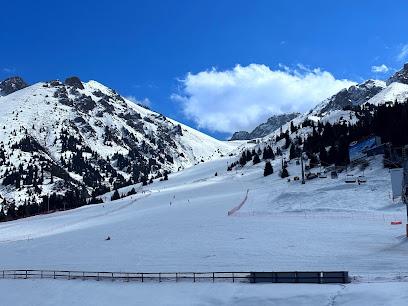
Kok Tobe
Discover breathtaking views and fun attractions at Kok Tobe, Almaty's stunning hilltop park and cable car experience.
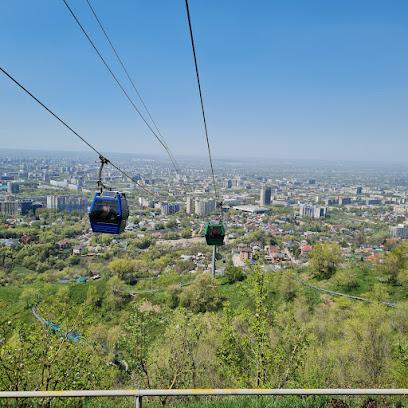
Fantasy World Almaty
Discover excitement and fun for the whole family at Fantasy World Almaty, an amusement park with thrilling rides and enchanting attractions.
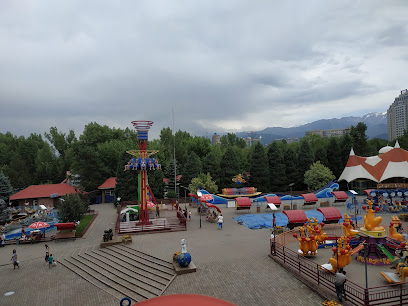
Dolphinarium Nemo
Experience the magic of marine life at Dolphinarium Nemo in Almaty, an unforgettable amusement park for the whole family.
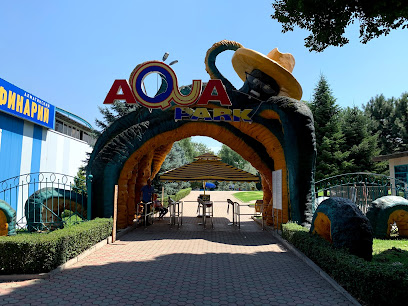
Abilkhan Kasteev State Art Museum
Explore the Abilkhan Kasteev State Art Museum in Almaty, a cultural gem showcasing Kazakhstan's artistic legacy and vibrant heritage through diverse artworks.
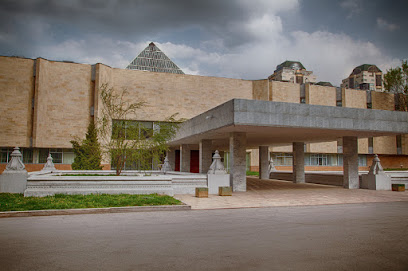
Kim Asar gorge
Explore the stunning Kim Asar Gorge in Almaty, a hiker's paradise with breathtaking views, diverse trails, and vibrant natural beauty.
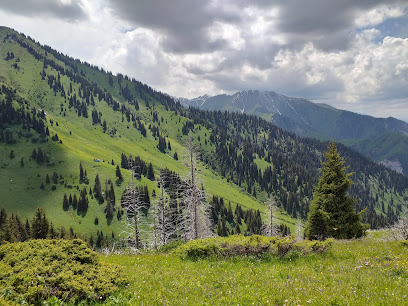
Birch Grove
Discover the tranquility of Birch Grove National Forest in Almaty, a serene escape filled with lush landscapes and diverse wildlife.
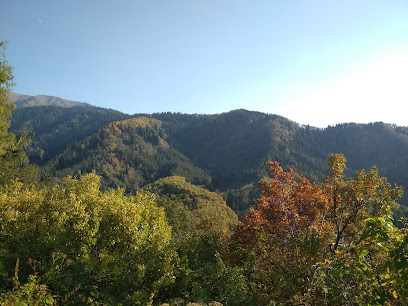
Furmanov peak
Discover the breathtaking beauty of Furmanov Peak in Almaty, a natural wonder perfect for hiking, wildlife watching, and stunning panoramic views.
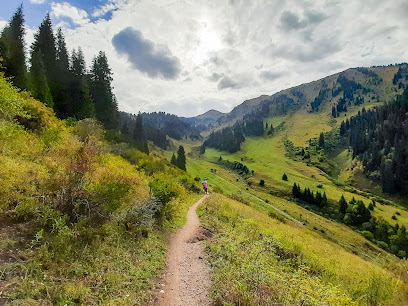
Cafe Apa Katya / Gorelnik Visit Center
Discover the perfect blend of adventure and relaxation at Cafe Apa Katya - Gorelnik Visit Center in Almaty, where nature meets comfort.
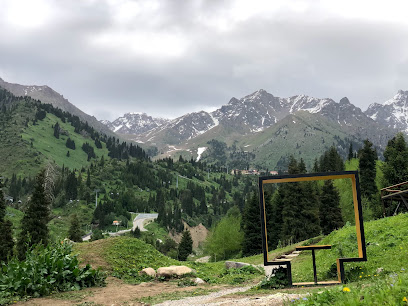
Waterfall on Kok Zhailau
Explore the breathtaking Waterfall on Kok Zhailau in Almaty, a must-visit destination for nature enthusiasts and adventure seekers alike.
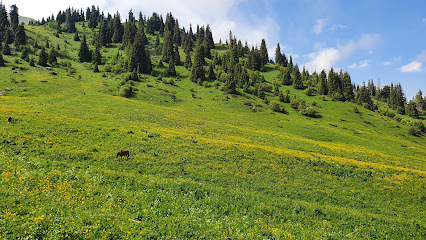
Mynzhylky dam
Explore the breathtaking scenery and serene ambiance of Mynzhylky Dam in Almaty's stunning Medeu District—a perfect getaway for nature lovers.
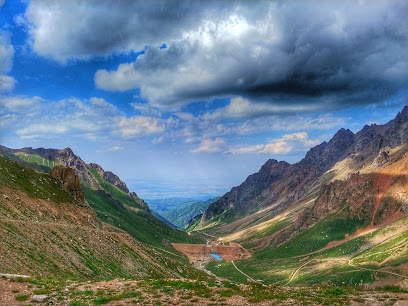
Visit Center Ile-Alatau National Park
Discover the breathtaking beauty and diverse ecosystems at Ile-Alatau National Park, a natural jewel near Kamenka, Kazakhstan.
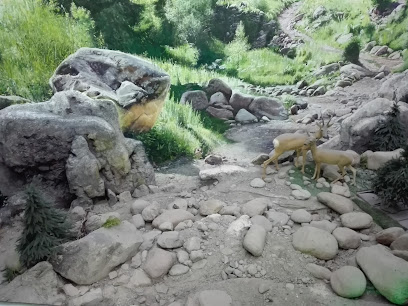
Swing
Experience the thrill of soaring above Almaty’s breathtaking landscape at the iconic Swing, a top tourist attraction showcasing nature’s beauty.
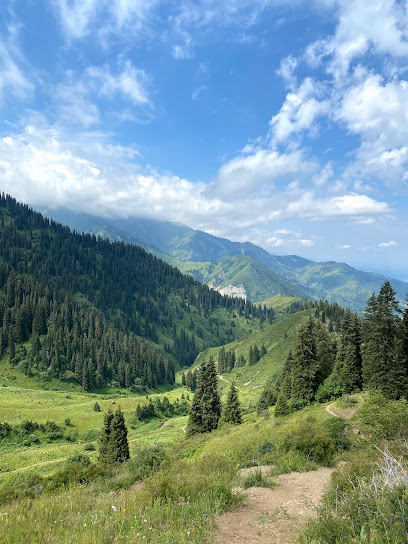
Kumbel peak
Discover the natural beauty of Kumbel Peak, a breathtaking hiking destination near Almaty, offering stunning views and a tranquil escape into nature.

Essential places to dine
Line Brew Almaty
Discover the ultimate steakhouse experience at Line Brew Almaty – where quality meets tradition in every bite.
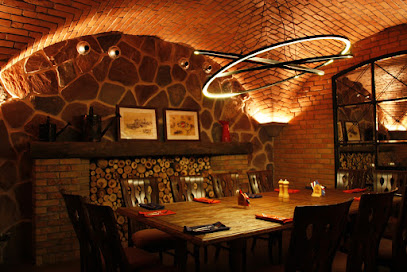
Alasha
Experience authentic Uzbek cuisine at Alasha in Almaty - where tradition meets taste in an elegant setting.
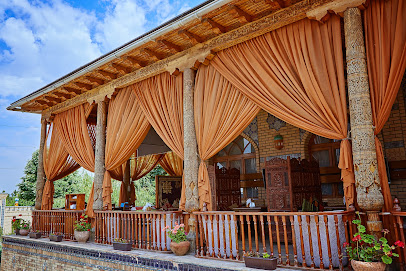
Ocean Basket Dostyk Plaza
Experience delectable seafood at Ocean Basket Dostyk Plaza – where Mediterranean flavors meet sushi perfection in Almaty.
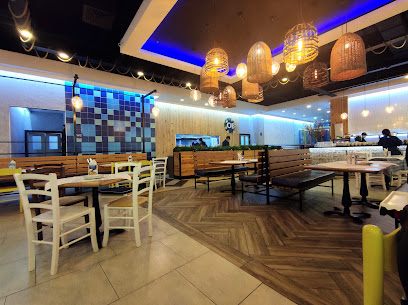
ABAY Restaurant
Discover the flavors of Kazakhstan at ABAY Restaurant in Almaty - where tradition meets taste.
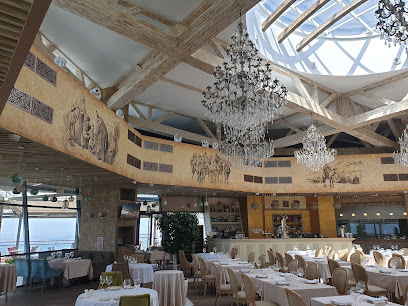
Olivier Restaurant & Bar
Experience the essence of European cuisine at Olivier Restaurant & Bar in Almaty – where every meal is a celebration.
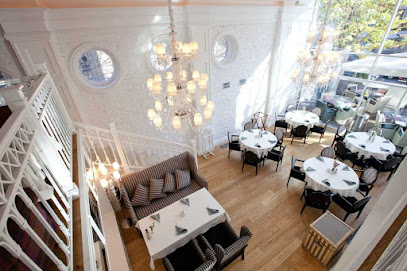
Almasay
Experience the perfect blend of exquisite dining and breathtaking hiking at Almasay in Almaty.
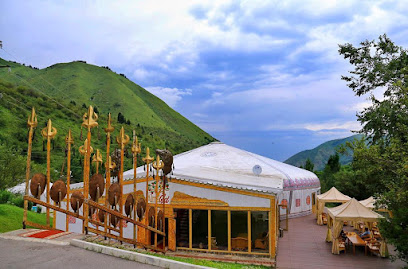
Auyl
Discover authentic Kazakh flavors at Auyl in Almaty – a culinary gem where tradition meets innovation.
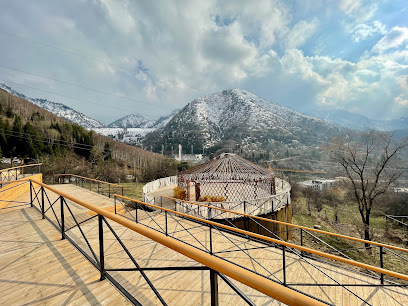
INZHU restaurant
Discover gourmet Western cuisine at INZHU restaurant in Almaty's Medeu District – where elegance meets flavor.
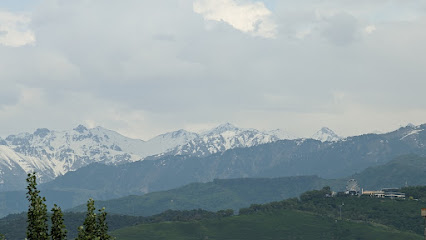
Gornyy
Discover Gornyy: A family-friendly restaurant nestled in Ile-Alatau National Park offering delicious local cuisine amidst stunning natural beauty.
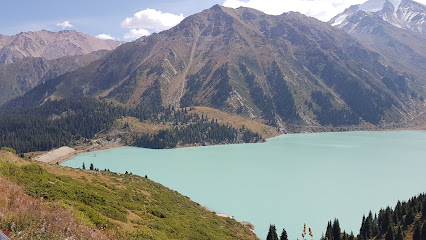
Alatau AJK新疆菜
Savor authentic Chinese cuisine at Alatau AJK in Almaty - where every dish tells a story.
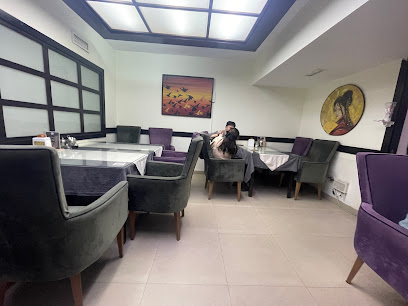
Restoran Vostochnoy Kukhni Ak Aul
Experience authentic Kazakh cuisine amidst breathtaking mountain views at Restoran Vostochnoy Kukhni Ak Aul.
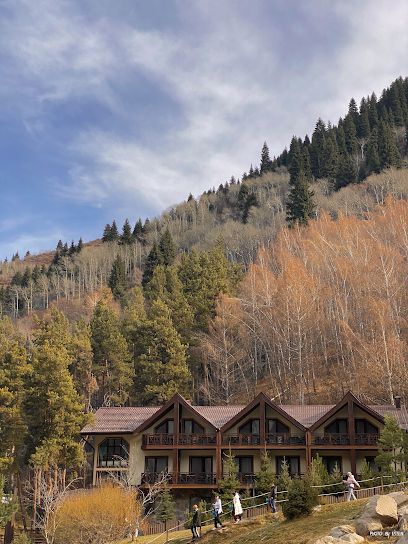
Ogni Alatau
Discover the culinary delights at Ogni Alatau, where traditional Kazakh flavors meet modern dining in the heart of Almaty.
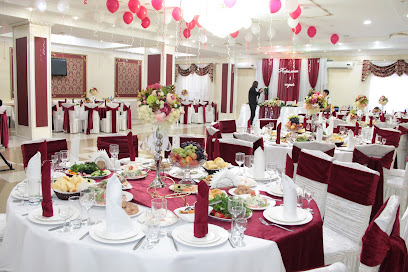
Haragun Country Restaurant
Discover the essence of Kazakh cuisine at Haragun Country Restaurant in Almaty—where tradition meets modernity in every dish.
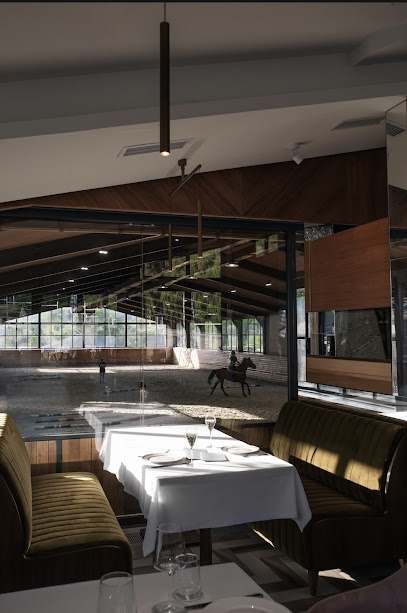
Markets, malls and hidden boutiques
MEGA Alma-Ata
Explore MEGA Alma-Ata, Almaty's premier shopping destination with a variety of stores, dining options, and entertainment for the whole family.

Ile-Alatau National Park
Explore the breathtaking landscapes and rich biodiversity of Ile-Alatau National Park, a natural gem near Almaty, Kazakhstan, perfect for outdoor adventures.

TsUM
Explore TsUM in Almaty: A vibrant department store offering local crafts, international brands, and a unique shopping experience that reflects the city's rich culture.
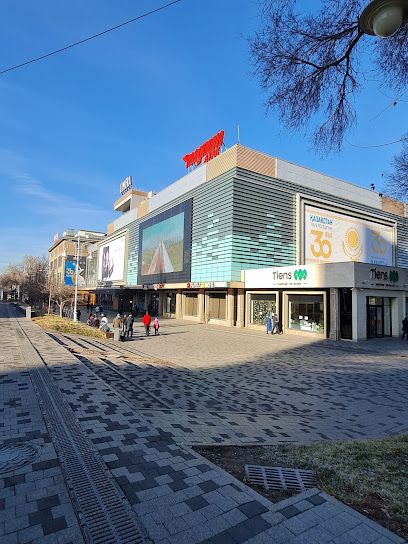
Villa Boutiques & Restaurants
Discover luxury shopping and exquisite dining at Villa Boutiques & Restaurants in Almaty, a premier destination for discerning travelers.
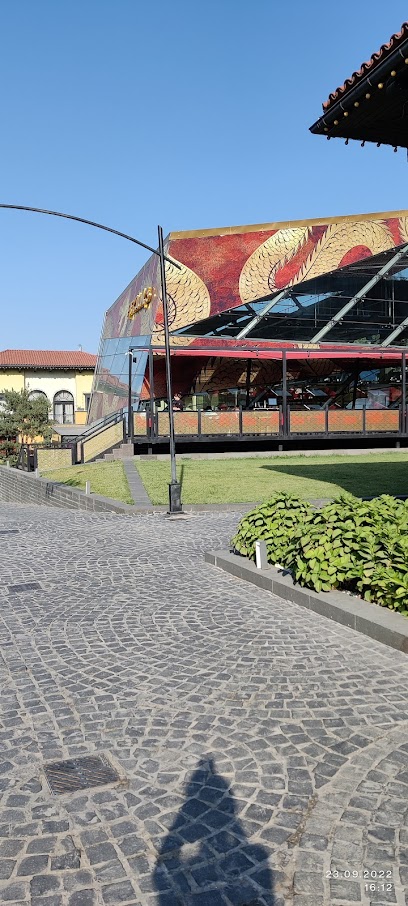
Enjoy Shop
Explore a delightful selection of unique gifts and souvenirs at Enjoy Shop in Almaty, capturing the essence of Kazakhstan's rich culture.
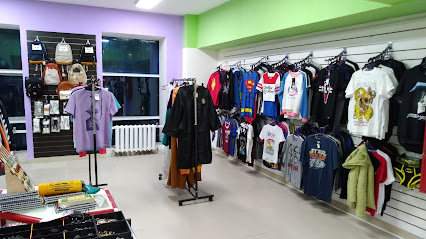
SINICHKI.STORE
Explore Almaty's Sinichki.Store for unique gifts, costume jewelry, and fashion accessories that capture the spirit of Kazakhstan.
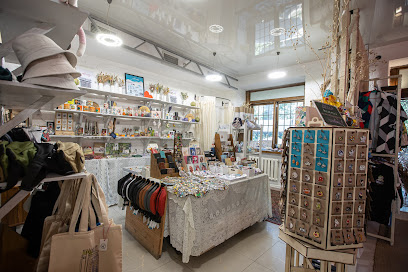
Cartier
Experience the epitome of luxury shopping at Cartier in Almaty, where exquisite jewelry and fashion accessories await discerning visitors.

Koktebe souvenir shop
Explore the essence of Kazakhstan at Koktebe Souvenir Shop, where unique crafts and local artistry await every traveler.

Mesto Sily
Explore Mesto Sily in Almaty for unique gifts and authentic Kazakh crafts that embody the spirit of Kazakhstan.
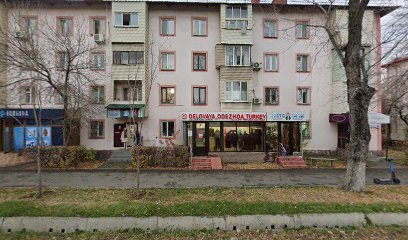
Аниме магазин ANIOR KZ
Dive into the enchanting realm of anime at ANIOR KZ, Almaty's top gift shop for collectibles, manga, and exclusive merchandise!

Empire
Discover unique Kazakh gifts and local crafts at Empire Gift Shop in Almaty’s bustling Dostyk Plaza, your perfect souvenir destination.
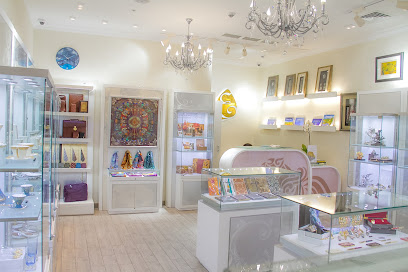
Graff Almaty, Samal
Explore the luxurious world of Graff Almaty, where exquisite jewelry and timepieces meet unparalleled elegance in the heart of Kazakhstan.
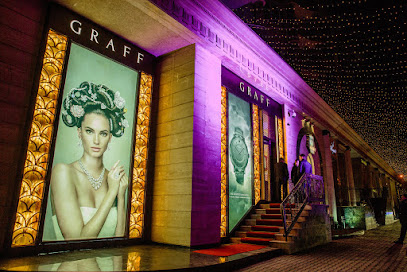
Pinko Boutique
Explore Pinko Boutique in Almaty for chic women's fashion, offering stylish clothing and accessories for the modern woman.

Sauvage Vintage
Discover the ultimate shopping experience at Sauvage Vintage, Almaty's premier outlet mall for stylish clothing and accessories at unbeatable prices.

uni design
Discover unique handcrafted gifts and souvenirs at Uni Design, your go-to gift shop in Almaty, Kazakhstan.
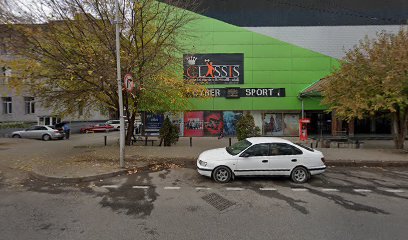
Essential bars & hidden hideouts
Chechil Жарокова
Experience the vibrant atmosphere and delicious fusion cuisine at Chechil Жарокова, Almaty's top gastropub and live music venue.
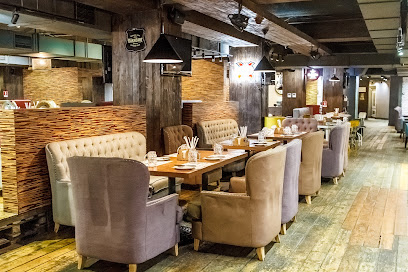
WL13Bar
Discover the energetic vibe of WL13Bar in Almaty, where exquisite drinks and delicious food meet a lively atmosphere for an unforgettable night out.

Barmaglot Bar
Discover the lively essence of Almaty at Barmaglot Bar, where great drinks meet vibrant nightlife in a modern setting.
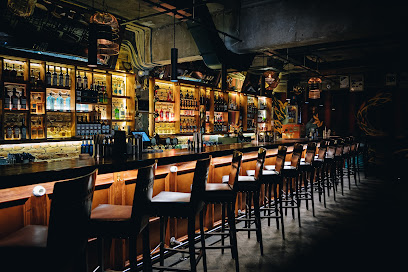
All Saints Bar
Experience the vibrant nightlife of Almaty at All Saints Bar, where exceptional drinks meet a lively atmosphere in the heart of the city.
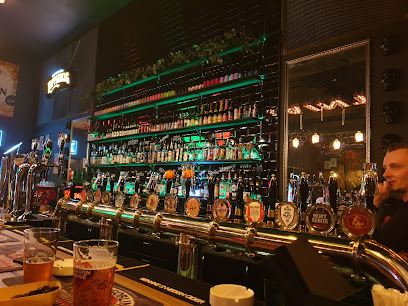
Yard House Pub
Discover the lively Yard House Pub in Almaty, where great food, local flavors, and a vibrant atmosphere await every traveler.
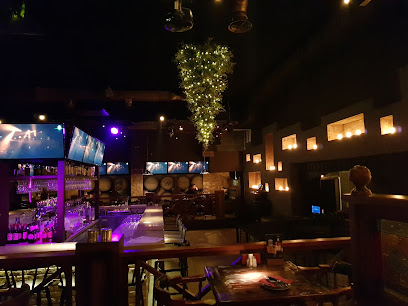
Harat's Pub
Harat's Pub in Almaty: An Irish pub experience with local flavors, vibrant atmosphere, and extensive drink options perfect for every traveler.
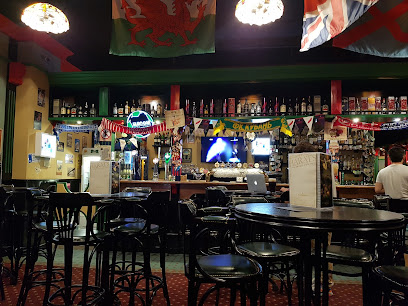
Glen Pub
Discover the vibrant atmosphere of Glen Pub in Almaty, where delicious food, local brews, and lively entertainment come together for an unforgettable experience.
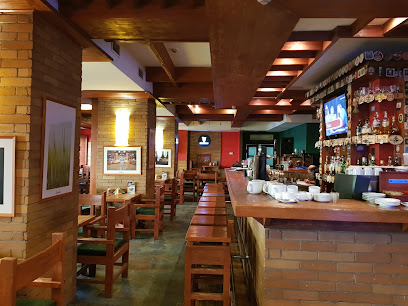
Sky Bar
Sky Bar in Almaty offers stunning views, luxurious ambiance, and creative cocktails for an unforgettable night out in the heart of the city.
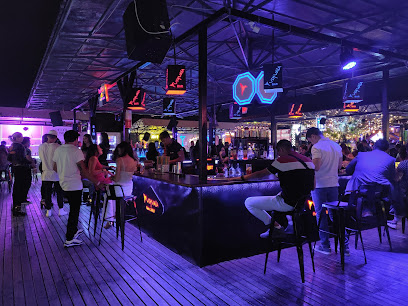
The FRIENDS Bar & Terrace
Discover the perfect blend of delicious food, drinks, and live music at The FRIENDS Bar & Terrace in Almaty, an unforgettable gastropub experience.
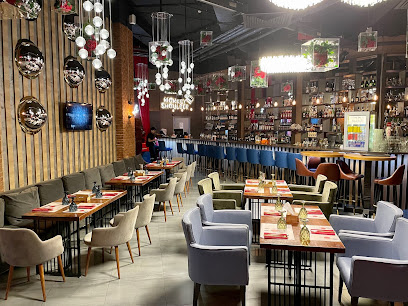
Bla Bla Bar
Experience the vibrant nightlife of Almaty at Bla Bla Bar, where great cocktails and lively music create unforgettable memories.

Harvey`s pub and grill
Experience the vibrant atmosphere and delicious flavors at Harvey's Pub and Grill in Almaty, a perfect spot for food and drink lovers.

Baza Brewery bar
Discover the essence of Almaty's nightlife at Baza Brewery Bar with local craft beers and a vibrant atmosphere.
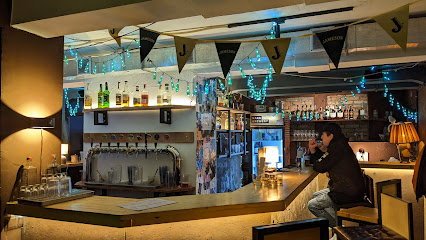
La Skala
Explore the vibrant nightlife of Almaty at La Skala, a chic bar with exquisite drinks, live music, and a lively atmosphere perfect for unwinding.
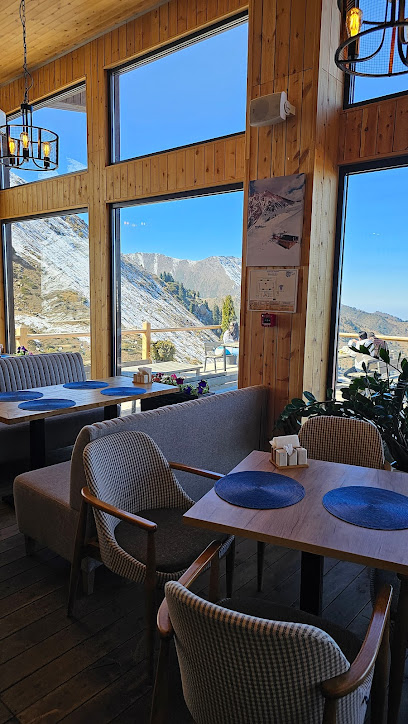
Gostinitsa
Discover the lively atmosphere and local flavors at Gostinitsa, a vibrant bar in Almaty, perfect for a night of fun and socializing.
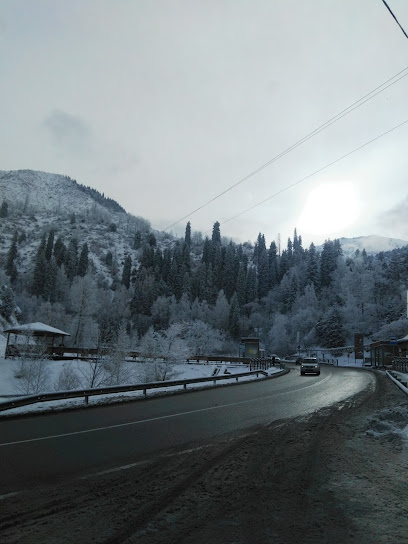
Deep'lomat Resto Bar
Discover the vibrant nightlife of Almaty at Deep'lomat Resto Bar, where great drinks and good times await in a trendy atmosphere.

Local Phrases about Ile-Alatau National Park
-
- HelloСәлем
[salem] - GoodbyeҚош келдіңіз
[qoş keldiniz] - YesИя
[iya] - NoЖоқ
[joq] - Please/You're welcomeРахмет
[rahmet] - Thank youРахмет
[rahmet] - Excuse me/SorryКешіріңіз
[keşiriniz] - How are you?Сіздің жаңаңыз қалай?
[sizdiñ jañañız qalay?] - Fine. And you?Жақсы. Сіздің жаңаңыз қалай?
[jaqsı. sizdiñ jañañız qalay?] - Do you speak English?Сіз ағылшынша сөйлейсіз бе?
[siz ağılşınsa söylesiz be?] - I don't understandМен түсінбеймін
[men tüsinbeymin]
- HelloСәлем
-
- I'd like to see the menu, pleaseМенюмен танистырып көрсем керек
[menyumenn tanistırıp körsem kerek] - I don't eat meatМен қасын жеміспін
[men qasın jemispin] - Cheers!Тәтті болсын!
[tätti bolsın] - I would like to pay, pleaseТілесім көрсетіп берсем керек
[tilesim körsedip berm kerek]
- I'd like to see the menu, pleaseМенюмен танистырып көрсем керек
-
- Help!Көмек!
[kömek] - Go away!Ауырға!
[awırğa] - Call the Police!Полицияға қоңырау!
[politsiyağa qoñıraw] - Call a doctor!Докторға қоңырау!
[doktorğa qoñıraw] - I'm lostМен ауырғанмын
[men awırğanmın] - I'm illМен аурулымын
[men awrulımın]
- Help!Көмек!
-
- I'd like to buy...Сатып алу керек
[satıp alu kerek] - I'm just lookingТек қараушы
[tek qaraushı] - How much is it?Ол канша тұра?
[ol qanşa tura?] - That's too expensiveОл тым де арзан
[ol tım de arzan] - Can you lower the price?Бағаны төменге алуға болмаса?
[bağanı tömengi aluğa bolmasa?]
- I'd like to buy...Сатып алу керек
-
- What time is it?Сағат неше?
[sağat neşe?] - It's one o'clockБір сағат
[bir sağat] - Half past (10)Он жеде алды
[on jede aldy] - MorningТаң
[tañ] - AfternoonКеш
[keş] - EveningКешкі
[keşki] - YesterdayКеше
[keşe] - TodayБүгін
[bügin] - TomorrowЕртең
[erteñ] - 1Бір
[bir] - 2Екі
[eki] - 3Үш
[üş] - 4Төрт
[tört] - 5Бес
[bes] - 6Алты
[altı] - 7Жеті
[jeti] - 8Сегіз
[segiz] - 9Тоғыз
[toğız] - 10Он
[on]
- What time is it?Сағат неше?
-
- Where's a/the...?... қайда?
[... qayda?] - What's the address?Мекен-жай күйі жаңа көрсетіп берер ме?
[meken-zhay küyi jaña körsedip berer me?] - Can you show me (on the map)?Мені көрсетіп бере аласыз бе (карта жерінде)?
[meni körsedip bere alasız be (karta jerinde)?] - When's the next (bus)?Келесі (автобус) не уақытта?
[kelesi (avtobus) ne waqıtta?] - A ticket (to ....)Билет (....ға)
[bilet (....ğa)]
- Where's a/the...?... қайда?
History of Ile-Alatau National Park
-
The Ile-Alatau range has been a crucial area for nomadic tribes for millennia. The Scythians, one of the early nomadic tribes, roamed these lands around the 8th century BCE. They left behind burial mounds known as 'kurgans,' which can still be found in the region. These kurgans serve as a testament to the rich cultural and historical heritage of the area.
-
During the height of the Silk Road, the Ile-Alatau National Park area was a significant route for traders and caravans. This ancient network of trade routes connected the East and West, facilitating the exchange of goods, ideas, and cultures. The park's diverse landscape provided essential resources such as water and shelter for travelers, and remnants of ancient caravanserais can still be found.
-
In the 19th century, Russian explorers and naturalists began to document the rich biodiversity and unique geography of the Ile-Alatau region. Notable figures such as Pyotr Semyonov-Tyan-Shansky contributed significantly to the scientific understanding of the area. Their expeditions paved the way for future research and conservation efforts.
-
The Soviet era saw significant development in the Ile-Alatau region, including the establishment of protected areas to preserve its unique ecosystems. The park officially became a national park in 1966. During this period, the Soviet government also built infrastructure such as roads and scientific research stations, which facilitated further exploration and conservation.
-
In recent decades, Ile-Alatau National Park has become a focal point for biodiversity conservation. The park is home to a wide variety of flora and fauna, including endangered species such as the snow leopard and the Tian Shan brown bear. Efforts to preserve these species and their habitats are ongoing, with international cooperation playing a crucial role.
-
The Ile-Alatau National Park is not only a natural treasure but also a cultural one. The park is dotted with ancient petroglyphs, rock carvings that depict scenes of daily life, religious rituals, and celestial bodies. These petroglyphs provide valuable insights into the lives of the people who once inhabited the region.
Ile-Alatau National Park Essentials
-
Ile-Alatau National Park is located in the Tian Shan mountains, near Almaty, Kazakhstan. The nearest international airport is Almaty International Airport, approximately 25 kilometers away. From Almaty, you can take a taxi or a bus to the park. The journey typically takes around 45 minutes by road. For a more scenic route, you can also arrange for a private tour or rent a car.
-
Within Ile-Alatau National Park, many attractions are accessible by foot, especially if you enjoy hiking. For longer distances, local taxis and private tour operators are available and can be arranged in Almaty. Public buses may also take you to the park entrance, but for exploring deeper into the park, a rental car or guided tour is recommended. Be sure to check vehicle accessibility, as some roads may be challenging for standard cars.
-
The official currency in Kazakhstan is the Kazakhstani Tenge (KZT). Credit cards are accepted in most hotels, restaurants, and shops in Almaty, but it's advisable to carry cash when visiting the park. There are ATMs available in Almaty, but it's wise to withdraw sufficient cash before heading to the park, as there are no ATMs within the park boundaries.
-
Ile-Alatau National Park is generally a safe destination for tourists. However, standard precautions should be taken. Avoid walking alone at night in unfamiliar areas and keep an eye on your belongings in crowded places. While there are no specific high-crime areas targeting tourists, it's always best to stay vigilant and aware of your surroundings. Be cautious of wildlife and ensure you follow all park guidelines to ensure your safety.
-
In case of emergency, dial 112 for immediate assistance. The local police station and medical facilities are available in Almaty. It's recommended to have travel insurance that covers medical emergencies. For minor health issues, there are pharmacies in Almaty where you can purchase over-the-counter medications. Always inform park rangers of your routes and plans if hiking.
-
Fashion: Do dress in layers and wear comfortable hiking shoes. Avoid wearing shorts and sleeveless tops when visiting cultural sites. Religion: Do respect local customs and traditions. Public Transport: Do be respectful and give up your seat to elderly passengers. Don't eat or drink on public transport. Greetings: Do greet people with a handshake. A slight bow of the head is also a sign of respect. Eating & Drinking: Do try local delicacies and accept food offerings graciously. Don't refuse hospitality, as it is considered impolite.
-
To experience Ile-Alatau National Park like a local, visit during the off-peak seasons to avoid crowds and enjoy the natural beauty in solitude. Engage with local guides who can offer deeper insights into the park's flora, fauna, and history. Don't miss the Big Almaty Lake and the stunning views from the Talgar Pass. For a unique experience, try horseback riding or picnicking by one of the park's many waterfalls.
Nearby Cities to Ile-Alatau National Park
-
Things To Do in Kemin
-
Things To Do in Karakol
-
Things To Do in Tokmok
-
Things To Do in Kochkor
-
Things To Do in Bishkek
-
Things To Do in Kyzyl-Oi
-
Things To Do in Jalal-Abad
-
Things To Do in Osh
-
Things To Do in Andijan
-
Things To Do in Namangan
-
Things To Do in Shymkent
-
Things To Do in Angren
-
Things To Do in Chirchiq
-
Things To Do in Tashkent
-
Things To Do in Khujand










